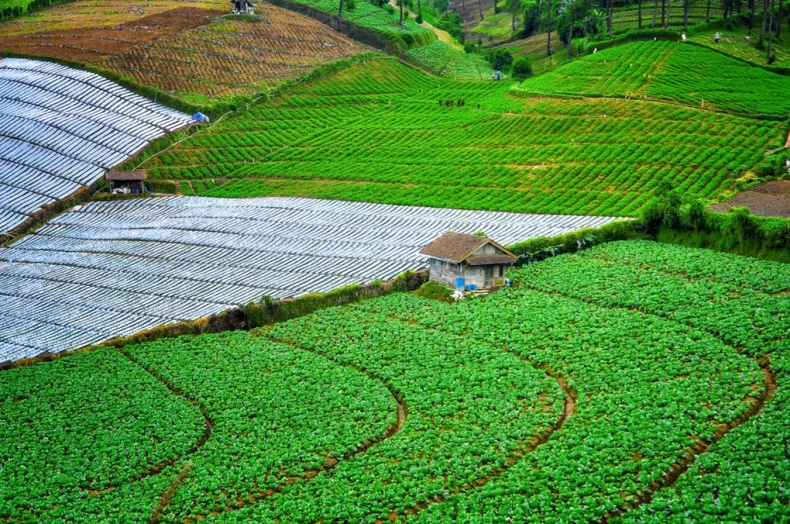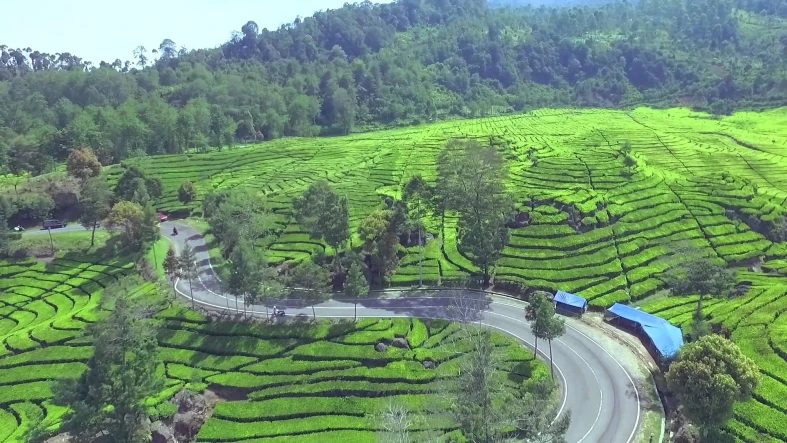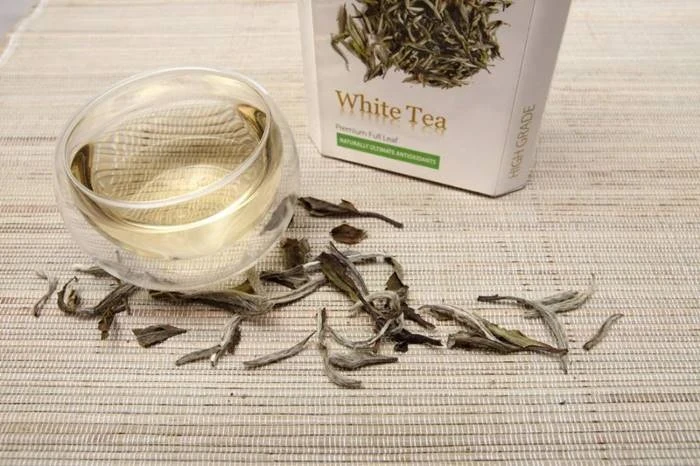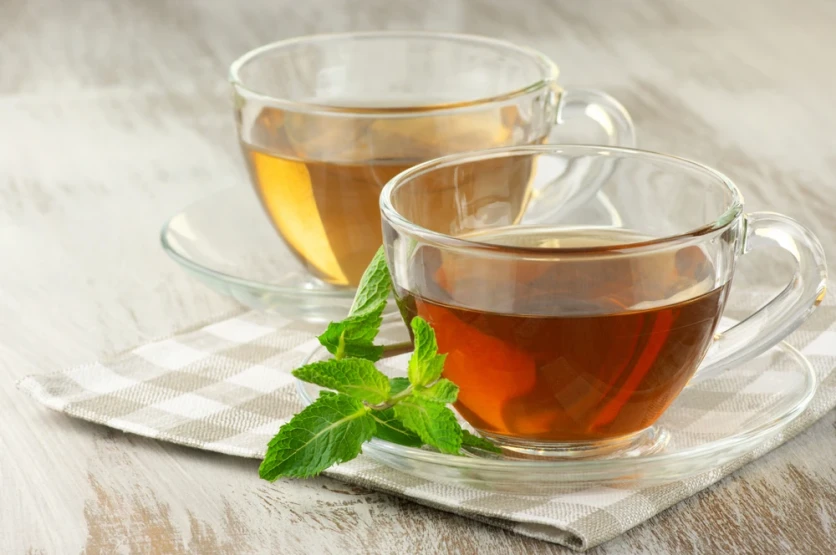
Fresh tea! When we hear this word, warmth fills our hearts, and a pleasant association immediately comes to mind: chilly weather, kitchen gatherings, snowfall outside, and tea with cookies. It warms the heart and makes the day better.
Although cold is unfamiliar to the locals in Indonesia – with temperatures around 30º C, it doesn't stop them from enjoying hot and delicious tea. More often, Indonesians consume jasmine tea with ice (es teh). This icy drink is easily found and sold on practically every corner, often with various flavors and unique additions. Locals even like to mix several tea varieties, sometimes up to 4 or more. The exact tea blends used are kept secret by the sellers.
Where and how is tea produced in Indonesia? And is it possible to buy it at an affordable price, perhaps as a gift for a family in Russia?
Tea Plantations and Export
Tea is one of the most consumed beverages worldwide. Originating in China, it has been enjoyed by locals for millennia. China leads in tea production. Dutch colonizers introduced Chinese tea to Indonesia. In the 19th century, a Dutch trader traveled to China to study the nuances of tea cultivation, exploring whether the Indonesian climate and soil were suitable for tea production.
Tea plants adapted to the Javanese soil, marking the beginning of tea cultivation in Indonesia. Volcanic soil and suitable humidity in mountainous regions created excellent conditions for the annual growth of tea bushes. By the 20th century, Indonesia had about 16 tea factories. Indonesia is the seventh-largest tea-producing country globally, with an output of 137,000 tons from tea plantations covering 112,053 hectares. However, due to the profitability of palm oil, many plantations were converted. Nevertheless, this didn't affect tea cultivation, and the production volume remains high.
Provinces in Indonesia where tea is produced:
1. West Java (accounts for about 70% of tea production) – cities of Bogor, Bandung.
2. Central Java – Karanganom, near the city of Surakarta.
3. East Java – Wonosari tea plantation, Mount Gambir, Jember.
4. North and West Sumatra – Simalungun, Jambi, and plantations near Lake Toba.
5. Yogyakarta.
Almost half of the tea produced in Indonesia is exported abroad, mainly to Malaysia, Russia, the United Kingdom, and Pakistan. Both regular and premium-class teas, sourced from both state and private plantations, are exported.
Tea plantations in Indonesia are scattered across various regions. In some districts, the tea garden has become an interesting tourist attraction. Vast expanses of tea gardens stretch across the land, providing shade from the heat. Coupled with the cool air, it makes any visitor feel at home, enjoying the atmosphere of the tea garden and taking a break from the hustle and bustle of the capital.
Besides the panoramic views, visitors can observe how tea leaves are processed by masters, transforming them into a delicious beverage. For avid enthusiasts, exploring the plantations and tasting various tea varieties will be a delightful experience. Perhaps, it will unveil new and interesting flavors of their favorite drink.
West Java is one of the largest regions in terms of tea production. The Rankabali tea plantation offers tours of tea plantations in the Patengan, Chividi area. Established in 1870 during the Dutch colonial era, it has gained prominence over time. It is located near the city of Bandung.

Mount Gambir Tea Plantation in Jember - the beauty of natural tourism in East Java, particularly in the Jember region, is undeniable. Visitors seeking Instagram-worthy places can directly visit the tourist attractions of the tea plantation.
Visiting hours are from 6:00 AM to 5:00 PM.
Phone: +6282333958479.

About the tea plantation in Bali
Beautiful tea plantations are not exclusive to Java but can also be found in Bali, for instance, at the Amerta Bali Tea Plantation.
Tourists have the opportunity to explore the beautiful island of Bali not only for beach lounging and cocktails but also to enhance their vacation with something unique. For example, taking a stroll through the cool tea expanses and discovering new impressions from the trip.
The tea garden is located at the foot of Mount Pucak Adeng, Tabanan district. The Amerta Bali tea plantation is based in Denpasar, while the tea leaf processing factory is in the Gianyar area, Bali. After such a walk through the tea gardens, one would want to relax and enjoy tea from an authentic tea plantation.
Tea cultivation conditions
Traditional technology or the CTC (Crushing, Tearing, Curling) method is still used in tea production today.
The CTC method involves processing tea by crushing, tearing, and curling wet leaves into powder. It is then fermented, dried, and sorted to produce black tea. While green tea is also produced in the country, it is often more for local consumption rather than export.

Types of tea, shops, and prices
Indonesian tea is particularly popular among locals. Brands like Sosro, Poci, Tong Tji, Gargoe, Nyapu, Gopek, Kayu Aro range in price from approximately 3,500 to 19,000 Indonesian rupiahs. Premium Melati Oolong is priced at 45,000 rupiahs. You can purchase any type of tea online through platforms like Tokopedia and Shopee.

In Indonesia, they came up with an unusual tea with whipped eggs – it's called teh telur or teh talua. Preparation recipes vary, but one of the main recipes includes tea, eggs, ginger (optional), lime, condensed milk, and sugar. Sometimes they offer sugar cubes (yellow gula batu or brown gula jawa). You can experience the taste of egg tea in Bali at Warung Jamu Herbal.
The tangy bright red-colored Rossella tea is made from hibiscus leaves, petals, and calyxes. The taste resembles hibiscus tea (carcade). You can enjoy Rosella at the Tea House "Citra Rosella" in Bali.
Ginger tea (teh jahe) is also popular. This beverage, known for its immune-boosting properties, would be particularly useful in cold frosty months, but it's in demand here as well. You can savor such tea in Bali at Wedang Jahe Lebih Berkah.
Another traditional elixir with ginger and various ingredients, called jamu, is even more popular in Indonesia. To maintain good health, it's beneficial to consume ginger tea or jamu from time to time.
Indonesian teh serai or lemongrass tea is made from green tea, lemongrass, lychee syrup, and fresh lemon. It not only offers a delightful lemon-citrus taste but also an attractive presentation. Adding ice in hot weather doubles the benefits: it quenches thirst, relieves stress, and uplifts your mood.
During rainy weather, you can warm up with hot tea with sweet or sour lime, known as teh jeruk panas or hot orange. You can enjoy these and other drinks at Gula Bali The Joglo or Warung Sunny in Ungasan.
The Chai Bali, a Chinese tea shop in Ubud, or The Chai Uluwatu, attracts with a vast assortment of quality tea sold in bulk. You also have the opportunity to organize a tea ceremony with all the attributes and special utensils. You'll find around a hundred tea varieties in the ChaiChitai (Tea House) store. The serene atmosphere, delicious tea, and reading a favorite book will create an impressive evening.
You can easily buy loose leaf, green tea, and other varieties online, for example, at Toko Seduh Tea & Tisane on Tokopedia or Shopee in the Seduh Pertama Tea Series store. For those who love floral drinks, these online stores offer chamomile, saffron, valerian, mint, and more. In addition to the variety of tea, they also offer accompanying goods for tea ceremonies or simple tea drinking.
Some of the best local tea brands worth noting are Tong Tji Jasmine Tea, Sari Wangi, Dilmah, Teh Celup Sosro, Lipton, and Sintren. However, tastes vary, and everyone chooses what's best for them.
There are tea varieties sold at around a thousand rupiahs, and white tea has an even higher price. It can hold the status of the most expensive tea in Indonesia, with prices ranging from 1.5 to 2 million rupiahs per kilogram.

Why is it so expensive? Tea leaves have white delicate fuzz, freshly picked and left to dry in the open air. With minimal human intervention, tea leaves retain their natural and authentic taste. The process of preparing white tea is the most complex compared to others, mainly due to the temperature and humidity of the open space.
Organic white tea is much more affordable and can be purchased online. In Indonesia, tea kiosks called Ginastel are also very popular. The name was derived from the past when locals initially referred to both coffee and later tea by this name. The term Gi-nas-tel is translated from Javanese as legi (sweet), panas (hot), kentel (strong). In just one day, these kiosks sell 100 cups of tea or more.
A real case about an unwashed teapot

According to a local Javanese, the tastiest tea in Indonesia came from an unwashed teapot. Odd as it sounds, it's a fact. Once, he asked a seller from Tegal city, Selavi district: "What's the secret of your tasty tea?" The seller explained: "The long-term deposit in my clay teapot enhances the flavor of the tea."
The seller continued: "Many people came from Jakarta and other distant areas just to drink this tea. There was even a person from Jakarta who offered to buy my teapot with the deposit for 4 million rupiahs." Such money for a teapot covered with tea crust inside and soaked with tea leaves! Amazing! The seller refused to sell the teapot, valuing his work.
Currently, in the city of Tegal, tea is still sold from clay teapots and remains very popular.
Proper tea preparation

Knowing the details of tea production in Indonesia, you can find a truly beneficial tea. Not all types of tea are beneficial, only those that have undergone minimal and careful processing. Additionally, correctly brewed tea significantly enhances the taste and aroma.
You can determine the quality by color, taste, and aroma. The drink should be transparent with a pleasant sweet-bitter taste. If the tea is cloudy or bitter, it means too many leaves were used or it was boiled for too long.
Before steeping the tea leaves, the container where the future tea will be should be preheated with hot water. There are types of tea that are prepared with a special recipe, for example, pouring water over the leaves and quickly draining it several times to "awaken" the leaves and let them unfold, revealing their flavor.
In general, according to statistics, the healthiest teas are green, yellow, white, oolong, and pu'er. They have invigorating properties and vitamins. Black strong tea is helpful for digestion but is more suitable for enjoyment. And if you add lemon or a sprig of mint, the pleasure will double.
You can add one right now!